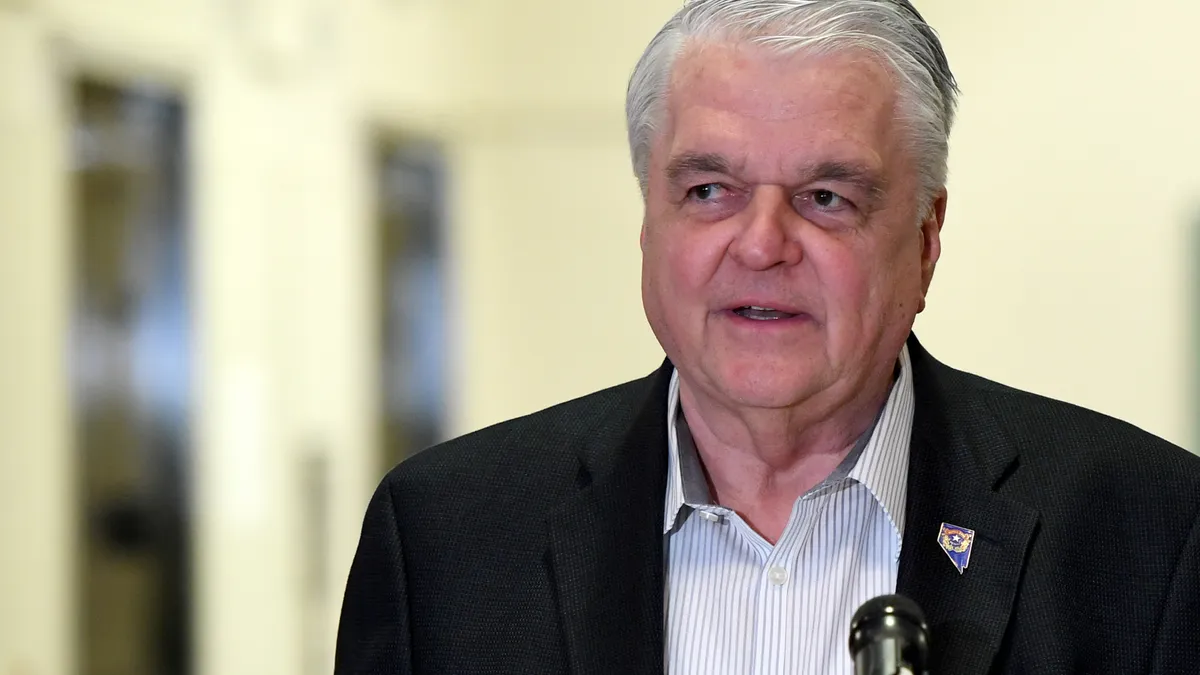Dive Brief:
-
Nevada's governor proposed a bill earlier this month that would form a committee to study how to fund and govern the state's community colleges to better meet its workforce needs.
-
The new bill stops short of an earlier proposal from Gov. Steve Sisolak, a Democrat, who called for creating an independent community college system during his State of the State address in January.
-
The pandemic has underscored the need to review community college oversight to ensure they can reskill the state's workers, a representative of the governor's office said during a hearing last week.
Dive Insight:
Support has been building in Nevada to separate the state's four community colleges from its higher education system. The idea's backers say the current governing system — which groups together the state's two- and four-year institutions — undervalues the former. Its funding formula also favors upper-division courses, leading two-year schools to stray from their workforce development missions, they argue.
Three Republican lawmakers revived a proposal earlier this month to separate the community colleges from the system, though it's unclear whether those schools support that bill. When reached for comment, three community colleges referred Higher Ed Dive to a Nevada System of Higher Education spokesperson, while another did not respond by publication time.
NSHE regents have "not had the opportunity to deliberate and officially take a position" on the governor's bill, the spokesperson said in an emailed statement. The system did not answer whether it would support an effort to separate the community colleges from the system.
Two Nevada lawmakers voiced support for studying the issue during a hearing on that bill last week, though they stressed the need for wider representation on the committee, including from universities and apprenticeship programs. The bill calls for the committee to include representatives from local chambers of commerce, a community college president and the chancellor of Nevada's higher ed system.
The governor's proposal charges the committee with reviewing how these schools can strengthen their relationships with employers and whether their missions have drifted over the past decade. "The timing is right to review the governance and the role of the state's community colleges," Heather Korbulic, the governor's policy director, said during the hearing.
Jill Derby, who served on the state's board of regents from 1988 to 2006 and has called for the community colleges to have their own system, said the governor's bill doesn't go far enough. "It's a kick-the-can-down-the-road measure," Derby said in an interview. "We were hoping it was a bill that was going to advocate for the separation, and in the end it turned out to be another study."
Nevada wouldn't be the first state to consider splitting its higher ed system.
In 2015, Tennessee's governor rolled out plans to create independent governing boards for its six universities. The move was meant to help those institutions respond to their regions' unique needs while keeping Tennessee's board of regents focused on the state's community and technical colleges.
Tennessee's regent board chair resigned in protest over the restructuring. Lawmakers approved nominations for the new boards in 2017.
Although some states have had success with separate higher education systems, they should consider whether multiple boards would make it more difficult to achieve state goals, said Rich Novak, a senior fellow at the Association of Governing Boards of Universities and Colleges. Nevada should also explore whether its funding formula or leadership is hindering colleges' ability to meet workforce needs, Novak said.
Other states have been considering merging their systems as a way to save money. Wisconsin announced plans in 2017 to combine its two- and four-year colleges, and the state is now exploring ways to bring together its technical college and university systems. And Utah's legislature passed a bill last year to unify its technical college and university systems in a bid to improve transfers among the institutions.















